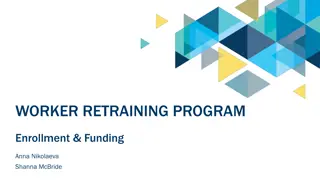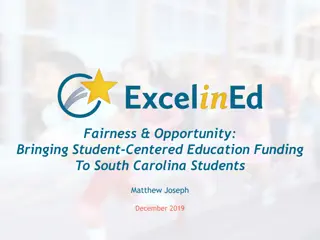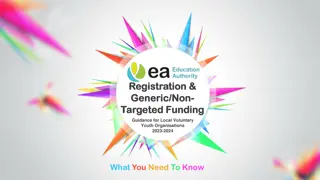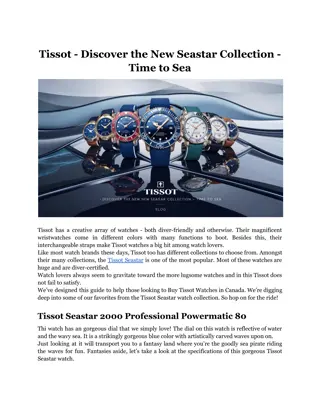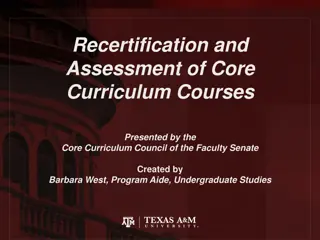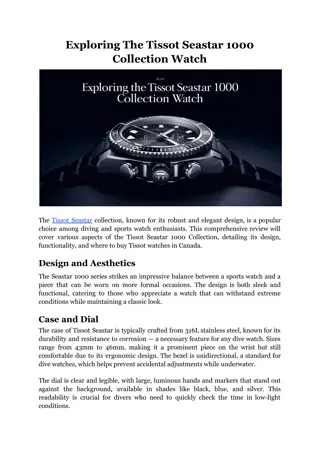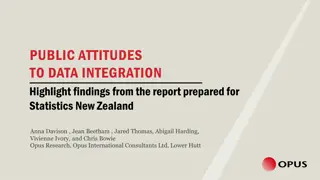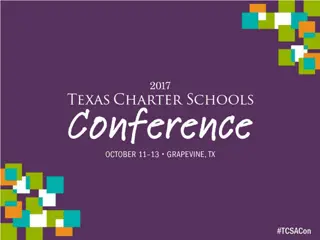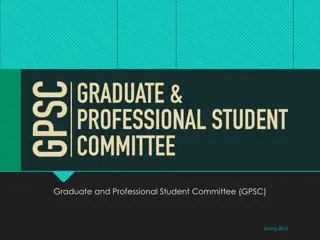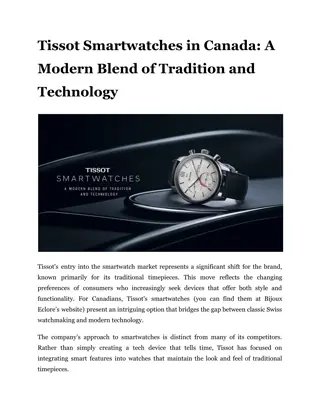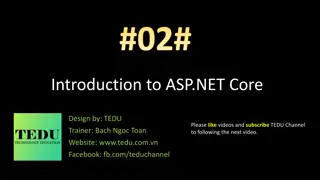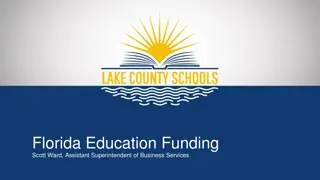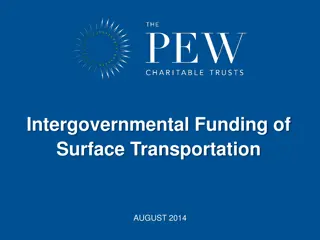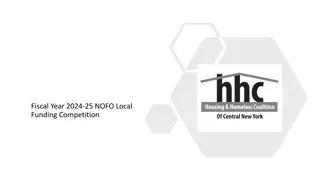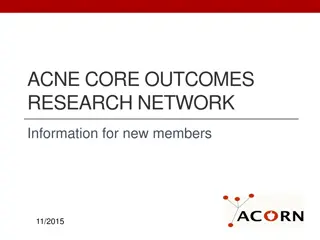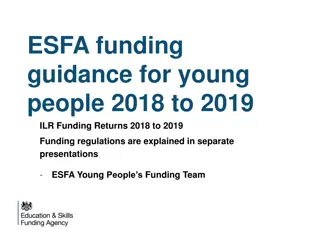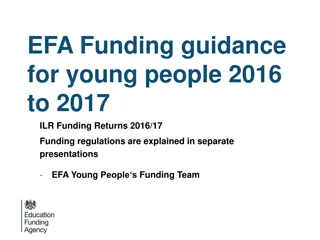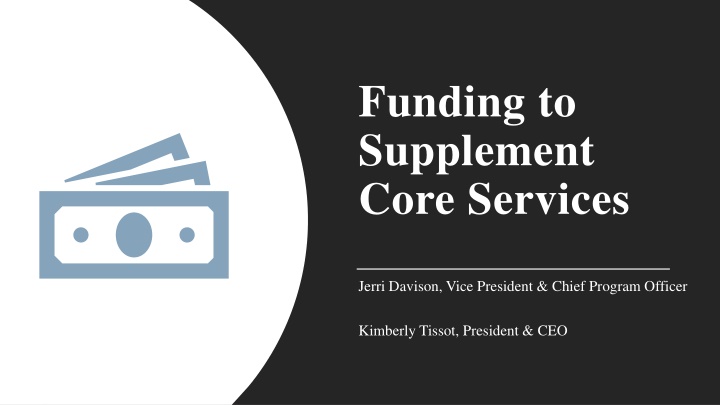
Strategies for Diversifying Funding Sources in CILs
Explore the importance of diversifying funding sources for Centers for Independent Living (CILs) to mitigate risks, enhance visibility, and ensure sustainability. Learn about resource development activities, growth projections, and tips for seeking funding from diverse streams in the disability sector.
Download Presentation

Please find below an Image/Link to download the presentation.
The content on the website is provided AS IS for your information and personal use only. It may not be sold, licensed, or shared on other websites without obtaining consent from the author. If you encounter any issues during the download, it is possible that the publisher has removed the file from their server.
You are allowed to download the files provided on this website for personal or commercial use, subject to the condition that they are used lawfully. All files are the property of their respective owners.
The content on the website is provided AS IS for your information and personal use only. It may not be sold, licensed, or shared on other websites without obtaining consent from the author.
E N D
Presentation Transcript
Funding to Supplement Core Services Jerri Davison, Vice President & Chief Program Officer Kimberly Tissot, President & CEO
Your Presenters Kimberly Tissot President & Chief Executive Officer Jerri Davison Vice President & Chief Programs Officer
Learning Objectives Today You Will Learn: The resource development requirements for CILs Our path to growth! The importance of diversifying funding More about the core services and incorporating them into outside funding opportunities Program ideas for seeking funding from non- disability specific funding streams To focus on IL within all funding opportunities Shared tips and support!
CIL Requirements Resource Development Activities CILs shall conduct resource development activities to obtain funding from sources other than Chapter 1 of Title VII of the Act. Compliance CILs shall provide evidence in its most recent annual performance report that it has conducted resource development activities within the period covered by the performance report to obtain funding from sources other than Chapter 1 of Title VII of the Act. 29 U.S.C. 796f-4
The Benefits of Diversifying Funding Mitigating risks- Could protect your CIL if you lost funding Autonomy: Depending on the funding structure, you could perform unallowable activities like lobbying! Visibility: The more we are doing activities, the more we are known! Adaptability: Can make adjustments to sustain staff if funding was put on hold or not funded immediately
Able SCs Growth 2010 2014: 2018 Funding: $524,890 Funding: $931,685 Funding: $2,537,973 Staff: 6 2011: Staff: 33 2015: Staff: 60 2019 Funding: $691,802 Funding: $1,216, 425 Funding: $3,445,134 Staff: 15 2012: Staff: 41 2016: Staff: 60 2020: Funding: $714, 841 Funding: $1,554,788 Funding: $4,039,533 Staff: 17 2013: Staff: 53 2017 Staff: 58 2021 (projected): Funding: $813,948 Funding: $2,068,164 Funding: $6,000,000+ Staff: 21 Staff: 53 Staff: 59+
What Does Funding Mean for your CIL?
Growth Goals Should Include: More Impact Increased services More needs are being met The disability voice takes the space Increased number of consumers served More community education More respect for the disability community Career paths & leadership opportunities Competitive wages and benefits for staff More exposure & positive reputation Attract more funders Advocacy!!
Sustaining Growth Starts at day one! New funding should not be seen as temporary or add more tasks to existing staff. Build evidence to support your services via successful program implementation Sustainability planning by building your funding so you have more capacity, knowledge and ability to perform services Make your impact known don t be the best kept secret! Attract other funders by your impact
Funding within the Five Core Services
Five Core Services (let s be real, its six core services) 1. Advocacy- BOTH Systems and Individual 2. Independent Living Skills Training 3. Peer Mentoring 4. Information and Referral Services 5. Transition Services 1 Institution Transition & Diversion 6. Transition Services 2- Youth Transition
Advocacy Diversity, equity, and inclusion (DEI) funding DD Council Funding Corporate partnership & sponsorships Fee for services National grants with IL Network Minority and marginalized focused initiatives Fundraising Emergency related opportunities Affordable & accessible housing efforts Systems change efforts ACL partners collaboration
Medicaid waivers United Way National grants with your IL Network BlueCross BlueShield/Centene/Amerigroup Community foundations Vocational Rehabilitation Department / DD agencies / Blind agency Social Security (Ticket to Work, WIPA, etc.) Emergency related education Self advocacy Assistive Technology Fundraising/Corporate Sponsorships Adjustment to disability Independent Living Skills Training
Peer Mentoring School funding / grant opportunities College and universities Corporate sponsorships Medicaid waivers/reimbursements Pre-employment transition services DD Council Self-advocacy grants
Information & Referral Services United Way ACL Partners Partnership building with likeminded organizations Education campaigns Information hub Training programs Call centers
Youth Transition Services Department of Education Parent Training and Information Centers Vocational Rehabilitation Pre-Employment Transition Services Local school districts K-12 Colleges/Universities IDEA Advisory Committee Corporate Sponsorships Fundraising Department of Juvenile Justice
Money Follows the Person Institution Transition & Diversion Relationship building with hospitals and home care organizations Collaboration efforts with partners to create a program to meet the needs Relationships with non-traditional institutions Medicaid waivers/reimbursements to implement consumer driven services in the community Assistive technology Partnerships with the state s adult protection agency, aging and homeless organizations Community supports and fundraising
Fee for Service Example Able Access is a program that educates the community through a variety of technical assistance and training programs to assist businesses with achieving full equity by including disability and fulfilling their legal obligations under disability rights legislation, including the Americans with Disabilities Act, Section 508 of the Rehabilitation Act, SC Persons with Disabilities Right to Parent Act, etc. Fees are on a sliding scale and discounted for nonprofit groups. Able Access includes: Architectural Accessibility Assessments Digital/Website Accessibility Training and Testing Customized Professional Trainings and Keynote Speakers Policy and Procedure Review to Ensure Inclusiveness Technical assistance
Tip One: Disability Intersects with All Populations Look at non-disability related opportunities and incorporate disability.
Tip Two: Disability Representation When representation is critical, CILs should be leading the disability space with consumer-driven programs and services. Nothing about us, without us!
Tip Three: Be Bold Sometimes it takes creating services to generate funding for services you have to spend money, to make money.
Tip Four: You Won't Win them All Its ok not to get funding for every effort you try. Save and tweak the program idea for another opportunity in the future!
Tip Five: Avoid Mission Drift Don t chase the money. Chase the opportunity to further your mission!
Avoid Mission Drifting Mission drift is when you secure funding that is outside of your mission. Avoid mission drift by: Setting rules and priorities for your CIL. Do not apply for funding unless it fits within those rules Ensuring your staff and board understands your current mission, values, goals, and vision Saying no (sometimes you have to) Creating a clear and focused strategic plan on increasing funding and organizational capacity Understanding the risks of mission drift for disability-led organizations Using the philosophy and your mission to guide all decision-making practices Understanding the benefits of being disability-led and using that to attract funders
Examples of CIL s Mission Drifting
Why does Mission Drift Hurt CILs? We are disability- led organizations Stay focused as our movement needs us!
Stay Connected! Website: able-sc.org Email: info@able-sc.org Phone: 803-779-5121 TTY: 803-779-0949 Join Email List: Text ABLESC to 72572 Social Media: Facebook: @AbleSC Twitter: @able_sc Instagram: @able_sc LinkedIn: Able South Carolina YouTube: Able South Carolina 29


